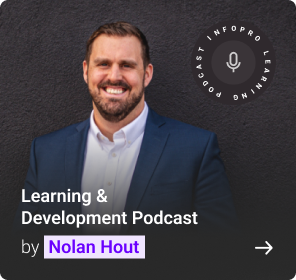The work dynamics have gone through drastic changes in the past few years. Organizations that welcome these changes with open arms and can innovate and adapt their core operational model to an ever-changing world will likely survive. Even the pharmaceutical industry isn’t exempted from these cultural shifts.
All pharmaceutical professionals must gain knowledge to satisfy the market demands and adapt to these unprecedented changes. A robust learning and development (L&D) strategy is required to help pharma employees adapt to an agile and ever-changing work environment.
According to research by the National Skill Development Corporation of India, there are skill gaps across various functions of the pharmaceutical industry.1
While the pharmaceutical industry maintains its exponential development trajectory, the requirement to train existing and new employees along the route is essential. Employees must get continuous pharmaceutical training to develop industry-wide expertise and keep up with the fast-paced virtual world.
The pharmaceutical training solutions should focus on the following main areas:
General skills – Human anatomy and physiology, drugs, diseases, and business acumen
Sales – Communications skills focusing on client engagement techniques, dealing with rejection, and latest patient care developments
Compliance – Sales and marketing codes, adverse event reporting, and knowledge of privacy regulations
L&D leaders of the pharmaceutical industry should release a well-crafted, customized pharmaceutical training solution for the employees of each role, level, and skill to perform their respective tasks seamlessly.
Key L&D features for pharmaceutical training development
Training pharmaceutical employees is essential for the expansion of the industry in multiple geographies simultaneously. eLearning comes to the fore in this situation. Here are a few most important factors to be taken care of while developing the pharmaceutical training courses.
1. Keeping it simple for learners with less complex learning paths
L&D leaders should develop pharmaceutical training courses that focus on the learners’ current needs. For example, developing courses according to the learner’s preferred training mode will maximize the learner’s ability to accommodate the training into their busy schedules.
However, catering to the learning needs of the audiences from different cultural backgrounds, qualifications, job roles, and levels can be a challenge for the L&D leaders. A simple, predictable, easily navigable, localized pharmaceutical training program with less complex learner journeys is expected to have a high completion rate.
2. Avoiding fancy elements to promote distraction-free learning
Individuals working in the pharma industry usually do not prefer the training content loaded with animations, gamification components, or highly stylized voiceovers. These elements for external motivation are much less helpful for a highly motivated learner who sees training as a part of a mission to improve what they do. A clean, simple, and streamlined design will help to engage more learners from the pharma domain.
3. Mobile-based learning with shorter modules of 5-10 minutes
Learners these days choose courses that are device agnostic and can be accessed from anywhere. Mobile-friendly content that is split into bite-sized modules and focuses on one specific pharma concept helps in better knowledge retention and reduced learner distraction. Clutter-free design highlighting important concept points is recommended to cover all important information in the shortest possible time.
4. Training modules tailored to specific job roles
Although most individuals working in the pharmaceutical sector need some level of common knowledge, this information does not apply to everyone. When training modules are tailored to a specific job role, the training content can cover a broad range of topics for a particular job role. It eliminates the need for employees to go through the irrelevant content.
A sales executive and a marketing manager, for example, may require access to the same information, but their jobs are very different. This implies that a marketing manager must identify the most appealing aspects of the medicine to promote to the consumer. On the other hand, a sales representative will need additional information about the qualities that will assist them in selling the drug to medical professionals and merchants.
5. Rapid development to cater to the agile learner’s needs
The pharmaceutical industry is subject to a lot of regulations and changes. Because of these changes, the pharmaceutical training courses must be constantly revised, often at the last minute.
For instance, the speedy launch of new drugs or treatment procedures sparks a need to launch new pharmaceutical training modules or sessions for the pharma professionals.
6. Goal-based assessments to evaluate the performance of learners
Any training program without an assessment is said to be incomplete. Goal-based assessments help understand the end goal of a specific module and focus the learner’s attention on achieving it. After completing a training program, awarding learners with the training certificates is an excellent method for learner engagement.
Conclusion
In the pharmaceutical industry, the future of work will be more flexible, tricky, digital, and collaborative than ever before. Therefore, pharma employees must be trained to deal with the dynamic nature of the work landscape. L&D leaders need to take due steps to create a successful pharmaceutical training integrated into the flow of work.
A simple training program that is mobile-friendly, tailored to specific job roles, and can be localized to cater to the needs of learners from different geographies will help pharma companies win the pharmaceutical training game.
Selecting a learning management system (LMS) can substantially change pharmaceutical training and communication within an organization. Read the Benefits of Using Learning Management Systems in a Pharma company.





